Screen scroll centrifuge CONTURBEX
The CONTURBEX is a continuously operating, filtering centrifuge with a very wide range of applications.
Ammonium sulfate is an inorganic salt consisting of ammonium ions and sulfate ions. The compound forms colorless or white crystals and is readily soluble in water.
The primary use of ammonium sulfate is as a fertilizer for alkaline soils. In the soil the ammonium ion is released and forms a small amount of acid, lowering the pH balance of the soil, while contributing essential nitrogen for plant growth.
As a food additive, ammonium sulfate is considered generally recognized as safe (GRAS) by the U.S. Food and Drug Administration, and in the European Union it is designated by the E number E517. It is used as an acidity regulator in flours and breads.
In the treatment of drinking water, ammonium sulfate is used in combination with chlorine to generate monochloramine for disinfection.
Ammonium sulfate can be obtained in a variety of ways, some of which are industrially produced, and some of which are by-products of certain industrial processes that are further processed or used.
In industrial terms, ammonium sulfate is produced as a by-product in some chemical processes, especially in the production of caprolactam. Coarse-grained products (in the range of 2 to 4 mm) can be produced from such ammonium sulfate-containing wastewater in so-called DTB (Draft Tube Baffle) or Oslo crystallizers. This is important to ensure good spreadability when applying the fertilizer to the fields.
In the production of:
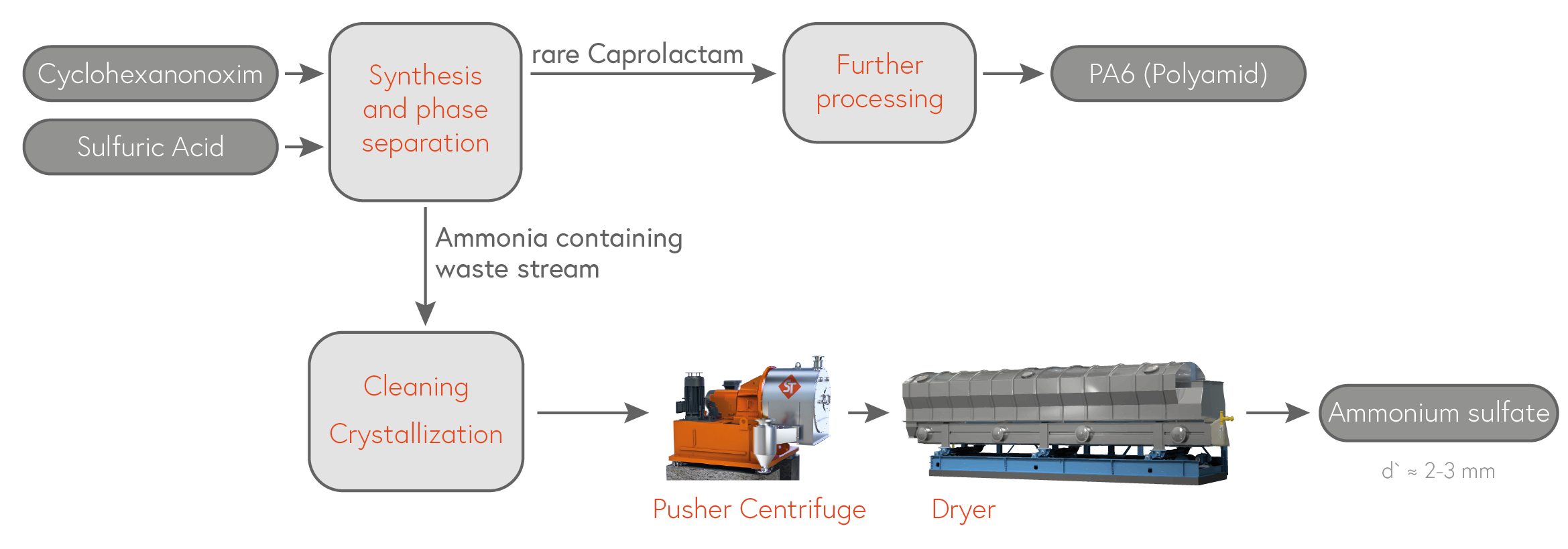
Synthetically, ammonium sulfate is obtained by reacting gaseous ammonia and sulfuric acid. In this application, too, the processing of „waste sulfuric acid“ from production processes is more the reason for building ammonium sulfate plants than the global demand for ammonium sulfate. Due to unavoidable dissipative processes during the fast reaction, the product from reaction crystallizers is significantly finer and therefore cheaper than the higher quality product from DTB crystallizers.
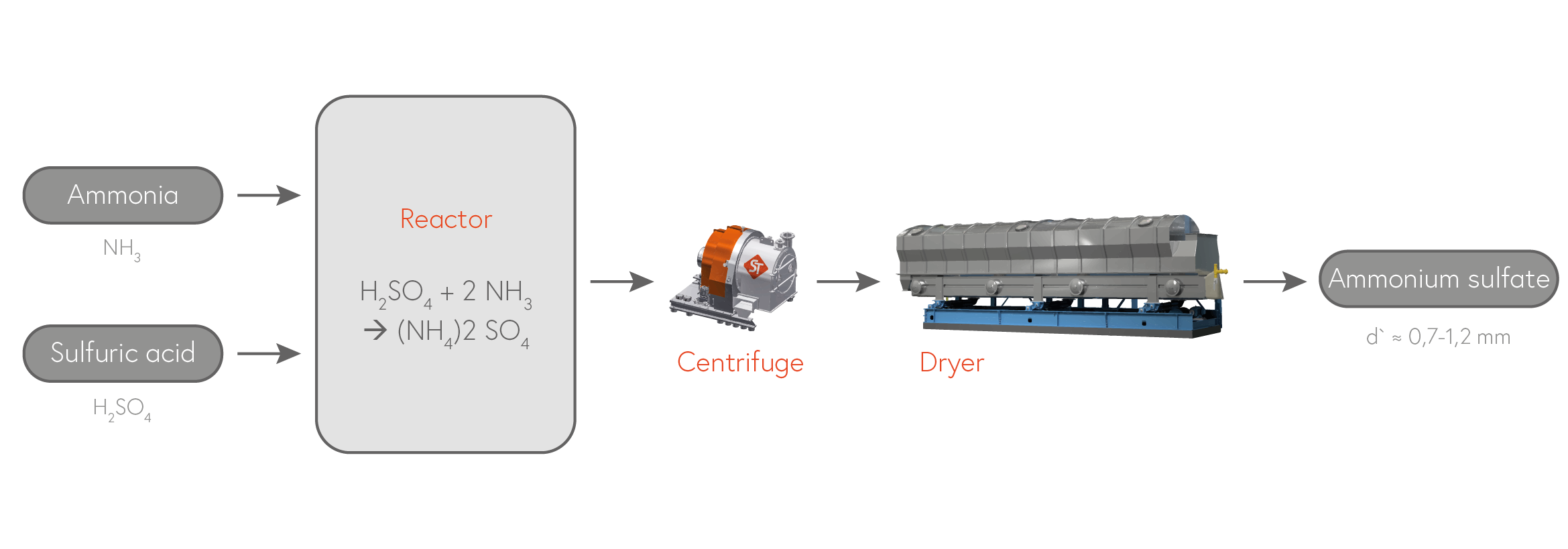
A comparable process for avoiding sulfur waste is also used in the purification of coke oven gas. Flue gas desulfurization produces ammonium sulfate as a byproduct.
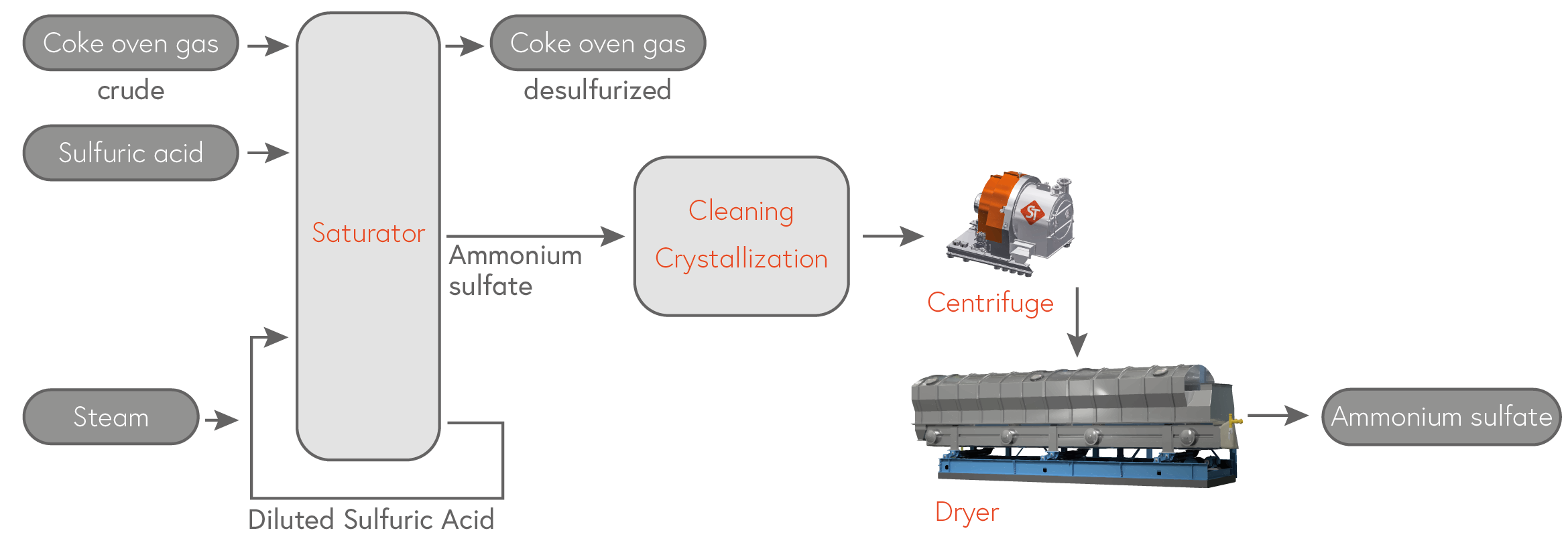
Regardless of the process, the ammonium sulfate produced is usually further purified and dried to remove impurities and produce a high quality end product. The crystals can then be processed into granules or powders for use in various other applications.
Centrifuges are used in the processing of ammonium sulfate to remove excess liquid such as sulfuric acid and other impurities by washing them out of the ammonium sulfate crystals. For economic reasons, solid-liquid separation is mainly performed with filter pusher centrifuges and CONTURBEX centrifuges.
SIEBTECHNIK TEMA centrifuges are specially optimized for the respective separation task. When selecting materials, austenitic and ferritic stainless steels have proven themselves in centrifuge construction for applications subject to normal stresses.
For processes in which abrasive materials are processed, the centrifuges must be provided with effective wear protection. Starting with hard coal processing, we have been continuously developing wear protection systems since 1922.
Our centrifuges can be equipped with highly developed wear protection systems made of e.g. tungsten carbide, Stellite® or ceramic tiles, to name but a few. Rubber coatings or matrix coatings have also proven themselves in various applications.
If required, our engineers develop new and efficient solutions in coating, bonding and joining technology for our customers worldwide.
Centrifuge components must not only withstand high forces, but also process-related stresses such as corrosion, wear and high temperatures. Cost and availability of materials also play an important role. Our customers select the necessary product-contacting materials according to these very specific requirements.
Duplex and high-alloy stainless steels, Hastelloy® and titanium materials for a wide variety of processes and stresses are part of our daily business in centrifuge construction. Our quality management has developed very detailed and cost effective processes for design, manufacturing processes and component testing based on European guidelines.
Typical sheet metal and forging materials for centrifuge wetted components include

The CONTURBEX is a continuously operating, filtering centrifuge with a very wide range of applications.

The SIEBTECHNIK TEMA SHS pusher centrifuge has established itself and proven itself as a modern high-performance unit in many industries.
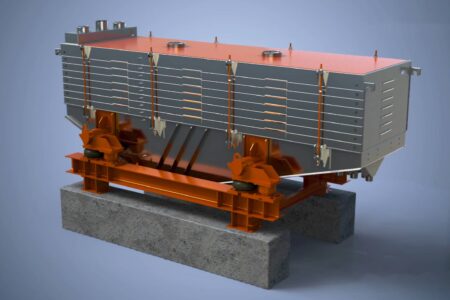
Our multi-deck screening machine is used as a control or classifying screen for free-flowing, dry or granular bulk materials.
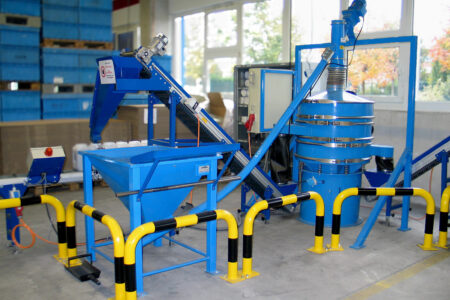
The SIEBTECHNIK CONFLUX type C tumbler screening machine offers outstanding adaptability to the highest requirements and is used in fine and ultra-fine screening technology.

Find the right contact for your region.
We have the right solution for every task. And if not, we’ll work with you to find one. Get in touch with us!
Our specialists will be happy to advise you individually on site or remotely, and are available to answer any questions you may have. Send us a message using our
